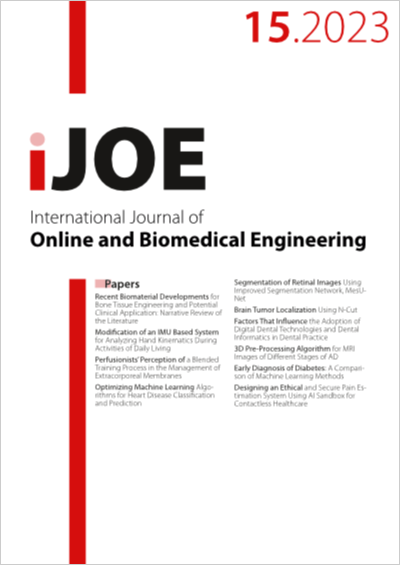Early Diagnosis of Diabetes: A Comparison of Machine Learning Methods
DOI:
https://doi.org/10.3991/ijoe.v19i15.42417Keywords:
Diabetes, Decision trees, Machine learning, Diagnosis, Support VectorAbstract
Detection and management of diabetes at an early stage is essential since it is rapidly becoming a global health crisis in many countries. Predictions of diabetes using machine learning algorithms have been promising. In this work, we use data collected from the Pima Indians to assess the performance of multiple machine-learning approaches to diabetes prediction. Ages, body mass indexes, and glucose levels for 768 patients are included in the data set. The methods evaluated are Logistic Regression, Decision Tree, Random Forest, k-Nearest Neighbors, Naive Bayes, Support Vector Machine, Gradient Boosting, and Neural Network. The findings indicate that the Logistic Regression and Neural Network models perform the best on most criteria when considering all classes together. The SVM, Random Forest, and Naive Bayes models also receive moderate to high scores, suggesting their strength as classification models. However, the kNN and Tree models show poorer scores on most criteria across all classes, making them less favorable choices for this dataset. The SGD, AdaBoost, and CN2 rule inducer models perform the poorest when comparing all models using a weighted average of class scores. The results of the study suggest that machine learning algorithms may help predict the onset of diabetes and for detecting the disease at an early stage.
Downloads
Published
How to Cite
Issue
Section
License
Copyright (c) 2023 Mowafaq Alzboon, Mohammad Al-Batah, Muhyeeddin Alqaraleh, Ahmad Abuashour, Ahmad Fuad Bader

This work is licensed under a Creative Commons Attribution 4.0 International License.



